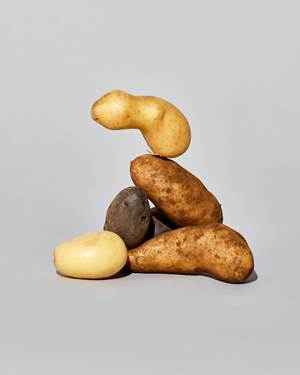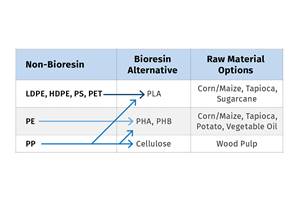Development of Sustainable Soft Materials Accelerated
VTT Technical Research Center fast tracks the development of materials by 50% through physics-based modeling and AI.

We recently heard from Finland’s VTT Technical Research Center regarding the newest development of it Integrated Computational Materials Engineering (ICME) toolbox ‘ProperTune’. Essentially the center’s team, led by research team leader Antti Puisto, has expanded the application of the ProperTune beyond hard materials like metals to now model and design soft materials like wood, polymers and plastics. A key contender for soft materials is bacteria. The team’s aim is to enable companies to cut down product development time by at least 50%, decrease cost elements of product development, reduce environmentally harmful materials and design entirely new materials that perform better.
This expanded use of ICME is expected to make the replacement of an increased number of unsustainable materials faster and economically viable while also providing improved material performance, according to Puisto. “Developing products virtually is happening now, it’s not science fiction anymore. Sourcing materials is becoming increasingly expensive or difficult. The battery industry, for instance, uses huge amounts of ground metals which will not be available indefinitely, and there is a burning need for biobased alternatives to lithium. As products are improved and new ones are created for different industries, we need to make each resource count.”
ProperTune is a collection of tools that combines multiscale physics-based modelling and AI with a data-driven approach to create microstructurally accurate materials and load in realistic conditions. ProperTune reportedly provides a highly in-depth analysis of a customer’s product and models how different environmental elements and stressors affect the product.
Working in a fully-digital environment, finding preferable and better performing alternatives for undesirable ingredients is dramatically faster compared to the traditional trial-and-error methodology. In addition, the durability along with other key performance parameters of the new material can also be verified in the virtual environment. Said Puisto, “By taking product development and testing into the virtual world, we are able to create better products faster and more cost-efficiently than ever before,” explains Puisto.
The VTT team sees bacteria is one of the most exciting prospects for soft materials as they are essentially an infinite source of materials. Said Puisto, “Paper cups have a barrier coating to help keep the liquid from immediately destroying the cup. Usually, this barrier is made of petrochemical polymers (typically LDPE). That could be replaced with sustainable alternative polymers produced by bacteria, cutting out a significant amount of fossil-based, unsustainable barrier material. The end result would be paper cups that are infinitely circular.”
According to Puisto, when it comes to new material solutions, to use the method itself to speed-up the development of new materials or selecting ideal material for an application, the team first focuses on the performance metrics, i.e. asking the question of what the material is supposed to do in the application. “Going back from these metrics, knowing the chain of causalities of the manufacturing process, and utilizing a set of tools known as inverse methods, it is possible to come up with solutions that are out-of-the-box from the classical trial-and- error viewpoint. Here, the more you have freedom to tune the constituents, the better, since this will give you larger amount of flexibility for the design space and, therefore, better solutions.”
Virtual material analysis and development holds a lot of promise for the construction industry as well. Insulation materials in the walls of buildings are usually not made of sustainable materials. Instead, they tend to be made of petrochemical-based polymeric materials (typically expandable polystyrene/EPS or polyurethane and in some cases, mineral wool), which end up in landfills at the end of life. Said Puisto, “How do we create an alternative insulation material that doesn’t rot between the walls – but also disappears without leaving a trace or harming the environment after their lifecycle is over? You’d need to design a material that lasts for 50 years but is also biodegradable. These are the kinds of inspiring challenges that we want to tackle.”
ProperTune has already been used by global leading companies, such as Caterpillar, Kone, and Wärtsilä, to improve the material performance of their products. Meanwhile, VTT is already working with customers looking for alternatives for their soft materials. Said Puisto, “We believe that this approach will make it possible to develop truly novel material solutions in far less time that it has taken to get us to this stage. We anticipate within a few years new materials utilizing this design approach will hit the market.”
Related Content
Cling Wrap Made from Potato Waste
Australia’s Great Wrap to expand into U.S. with home compostable cling wrap and its refillable dispenser made from recycled PET bottles.
Read MoreHow to Optimize Your Molds and Hot Runners for Processing Bioresins
Demand for bioresins is growing in molded goods, particularly as a sustainability play to replace fossil-fuel based materials, but these materials are not a drop-in replacement for traditional materials. Molds and hot runners need to be optimized for these materials.
Read MoreMelt Flow Rate Testing–Part 1
Though often criticized, MFR is a very good gauge of the relative average molecular weight of the polymer. Since molecular weight (MW) is the driving force behind performance in polymers, it turns out to be a very useful number.
Read MoreHow to Optimize Injection Molding of PHA and PHA/PLA Blends
Here are processing guidelines aimed at both getting the PHA resin into the process without degrading it, and reducing residence time at melt temperatures.
Read MoreRead Next
For PLASTICS' CEO Seaholm, NPE to Shine Light on Sustainability Successes
With advocacy, communication and sustainability as three main pillars, Seaholm leads a trade association to NPE that ‘is more active today than we have ever been.’
Read MorePeople 4.0 – How to Get Buy-In from Your Staff for Industry 4.0 Systems
Implementing a production monitoring system as the foundation of a ‘smart factory’ is about integrating people with new technology as much as it is about integrating machines and computers. Here are tips from a company that has gone through the process.
Read MoreMaking the Circular Economy a Reality
Driven by brand owner demands and new worldwide legislation, the entire supply chain is working toward the shift to circularity, with some evidence the circular economy has already begun.
Read More


























